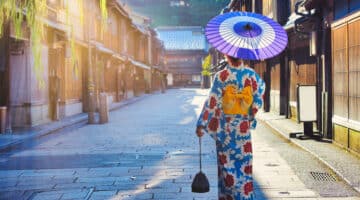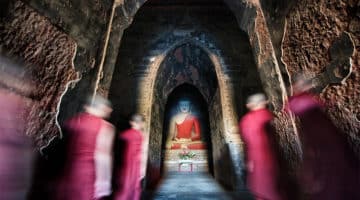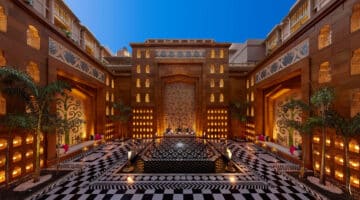Off Season Japan: Unique Itineraries from Asia Concierge
September 20, 2023 by Perrie Hartz
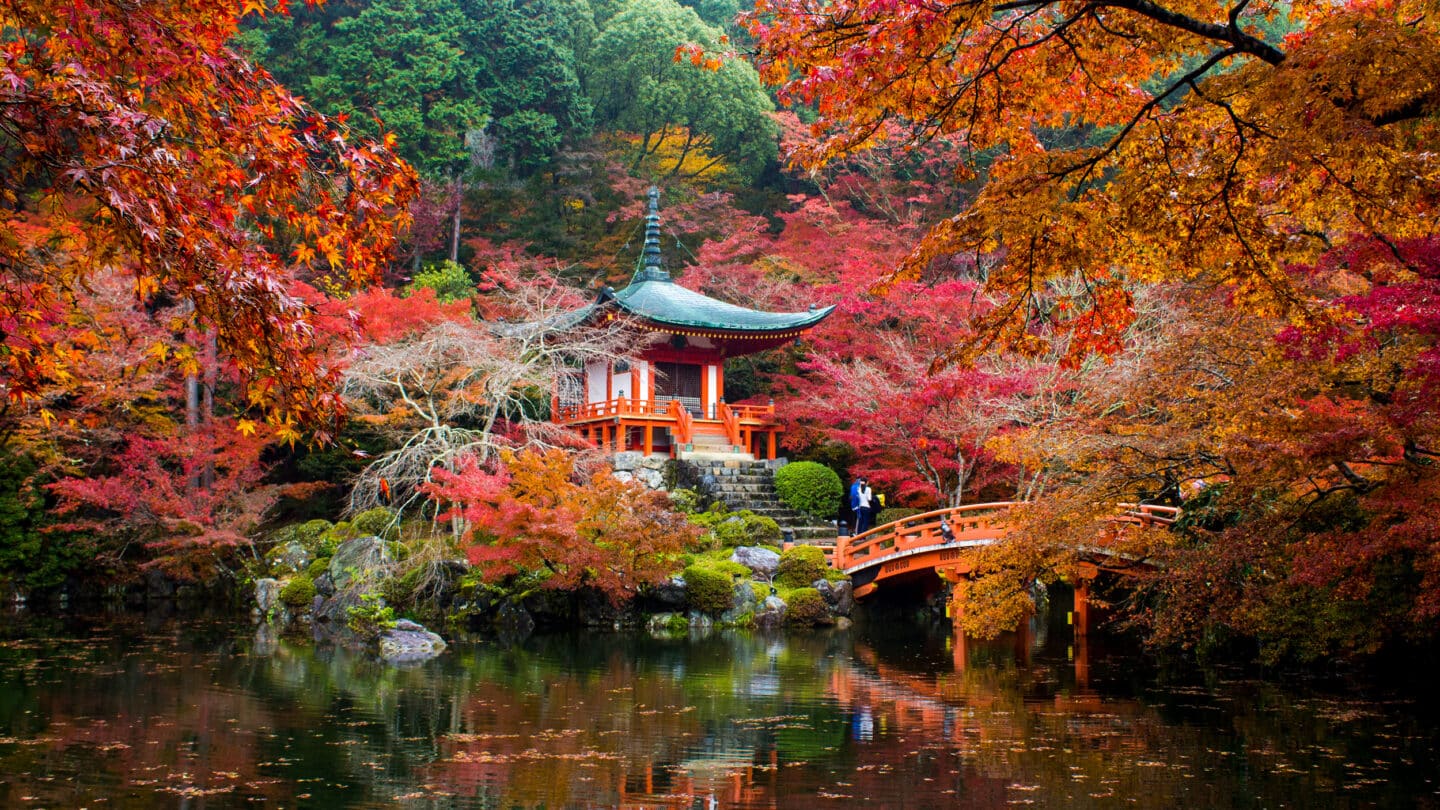
A travel design company with over 25 year of in-depth experience, Asia Concierge specializes in the art of experiential travel throughout Asia, including their most recent addition to the portfolio: Japan. Using intimate and unmatched knowledge of this popular destination, this luxury DMC creates meticulously crafted, highly curated Japan itineraries that aim to inspire unforgettable and unique travel experiences that are not part of the mainstream, outdone only by the awe-inspiring beauty of Japan itself.
Japan in the springtime is one of the most popular times for travelers to choose to visit, as these balmy months mark the blooming of the famous cherry blossom trees, which envelop the country in a soft pink splendor. However, along with these colorful blooms and the celebration of coinciding festivals, Japan also sees a great influx of tourists during this season, which can be overwhelming. With Asia Concierge’s incredibly detailed and unique “off-season” itineraries, travelers will discover adventures far off the beaten path that allow them to explore areas beyond their comfort zones, and to fully immerse themselves in local, once-in-a-lifetime experiences found in Japan’s lesser-known areas during other times of the year.
From the lovely castle town of Kanazawa to the peaceful rural village of Chino to the wintery beauty of the Northern Alps, take a look at some of Asia Concierge’s unmatched Japan off-season itineraries that explore the famous sites, hidden gems, and best-kept secrets of the Land of the Rising Sun.
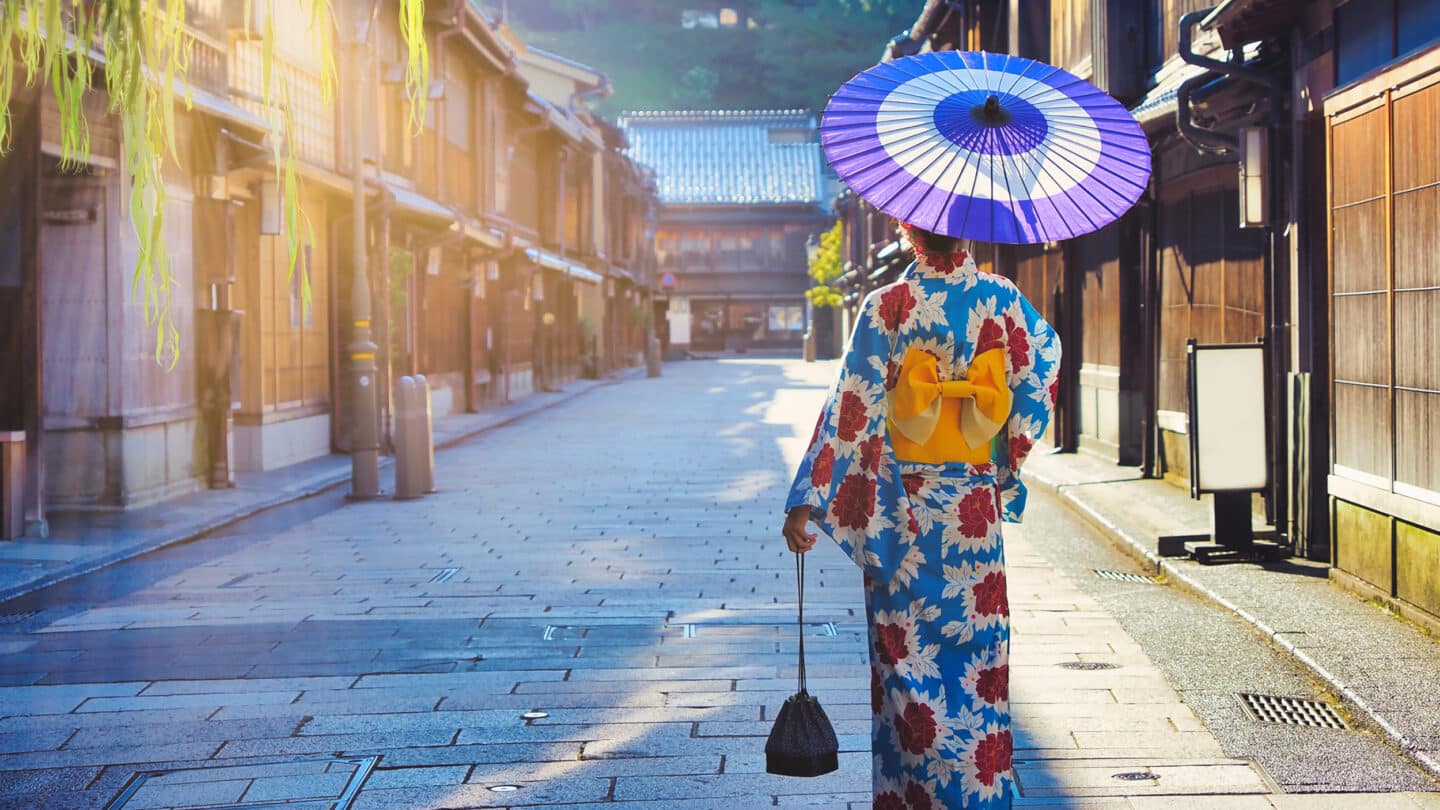
Summer Itinerary: Between the Mountains and the Sea
This unique itinerary takes travelers from the stunning castle town of Kanazawa, located on the cost of Inland Sea, to the picturesque Northern Japanese Alps.
Day 1: Tokyo to Kanazawa
Japan’s bullet train, also known as the Shinkansen, is a true marvel of modern engineering. Today you will take a ride on this ultra high-speed train in Tokyo and be seated in the first-class ‘Gran Class’ carriage. Your destination is the charming castle town of Kanazawa, a hidden gem in Japan, offering a peaceful escape from the bustling metropolises. It was once a prosperous castle town and samurai stronghold, and its rich cultural heritage is still evident today. The city also has a thriving contemporary arts scene, with numerous museums and galleries showcasing both local and international artists. Its location on the Sea of Japan has made it famous for some of the best seafood in the country.
From the ultra-modernity of the Shinkansen, you will take a step back in time to the Higashi Chaya. The only functioning geisha district outside of Kyoto, it is home to preserved wooden buildings, meandering canals, and local artisans. Here you’ll visit a tea house for a traditional tea ceremony experience. With its intricate rituals, handmade tea bowls and sweets, tea ceremony is a celebration of nature and human connection and a true glimpse into the soul of Japan. Dinner tonight is at Zeniya. This small restaurant is unique in that it does not have a menu. The chef will create a customized meal for each guest based on the best ingredients of the day, the weather and temperature, and the guest’s food preferences. Sitting at the counter and watching the chef create your personal menu is almost as good as eating it…almost!
Day 2: Kanazawa
Day 2 begins with a visit to Kanazawa’s most famous attraction, Kenroku-en garden, known for its stunning landscapes, tranquil ponds, and rich history. You’ll then move on to the nearby Omicho Market, home to over 200 stalls and restaurants. Here you will discover the seasonal specialties from the abundant Sea of Japan – whether it is Snow Crab in the winter, or Kan-buri (fatty yellowtail) in the spring. There are tastings a-plenty to whet your appetite, and you’ll have lunch shoulder to shoulder with the locals at a restaurant of your choosing. This afternoon will be all about art. On the modern side, the 21st Century Museum of Contemporary Art exhibits works of acclaimed contemporary artists from Japan and all over the world. On the traditional, you can meet local artisans specializing in some of Kanazawa’s famed crafts. This includes gold leaf work, of which Kanazawa is responsible for 99% of Japan’s production, lacquerware and kaga-yuzen silk dyeing. You’ll end the day at Fukumitsuya Higashi, a sake bar run by Fukumitsuya sake brewery. This brewery was founded in 1625, making it the oldest in Kanazawa. Here you will sample a range of sake, learn about how it is made, and the distinct types.

Day 3: Yamashiro Onsen
A short drive along coastal roads brings you to the ancient hot spring town of Yamashiro Onsen. The town’s spring waters, which relieve muscle and joint pain as well as skin and digestion problems, were discovered over 1300 years ago. Following lunch at a local restaurant, you will join mountain master Noboru Nimaida on a gentle hike through the local area and explore the village of Ozuchi, a hidden gem nestled in the mountains with traditional Japanese houses made from clay. Tonight, you’ll stay at the luxurious Beniya Mukayu ryokan. This Relais & Chateaux property consists of only 16 rooms, and you can choose from a Japanese style room, complete with tatami flooring and comfy futon beds, a modern style room featuring western style beds, or a combination of both. All rooms have their own private open-air hot spring bath with views of the surrounding forest and gardens, the perfect place to ease your tired muscles. A sumptuous Japanese dinner is included with your stay in the onsite Kaiseki Horin restaurant. Relax with an aperitif on the terrace overlooking the natural garden, before enjoying your multi course dining experience utilizing seasonal ingredients from the local area.
Day 4: Toyama
This morning you’ll have the chance to create unique Kutaniyaki porcelain, famed for its elegant designs, and characterized by exceptionally vivid colors. Meet the artists and artisans that design and create stunning tableware, look at their techniques and learn how to apply gold leaf to colorful Kutaniyaki porcelain objects using professional tools. Let traditional techniques and patterns fuel your creativity while making your own piece and feel the tradition coming to life in your hands.
After lunch, you’ll head deep into the mountains of Toyama prefecture, home to the spectacular Northern Japanese Alps, where a world class dining and accommodation experience awaits. Located in a canyon at an altitude of 1,000 meters, L’evo was created in the image of the mountain village that once existed here. Consisting of 6 buildings – a restaurant, sauna, and accommodation cottages, L’evo is surrounded by verdant forest in summer and covered under a thick blanket of snow in winter. The only sound to be heard is the constant rushing of the fast-running Toga River along the valley floor. You have the afternoon free to relax in your luxurious cottage, take a sauna, or meander along the mountain paths. Tonight, you will dine at the 2-Michelin star restaurant. Chef Eiiji Taniguchi regularly forages for ingredients in the forests surrounding the restaurant and has built a network of collaborators who share the best from their farms, breweries, and vineyards. The restaurant also features cutlery, crockery and serving dishes created by local artists.
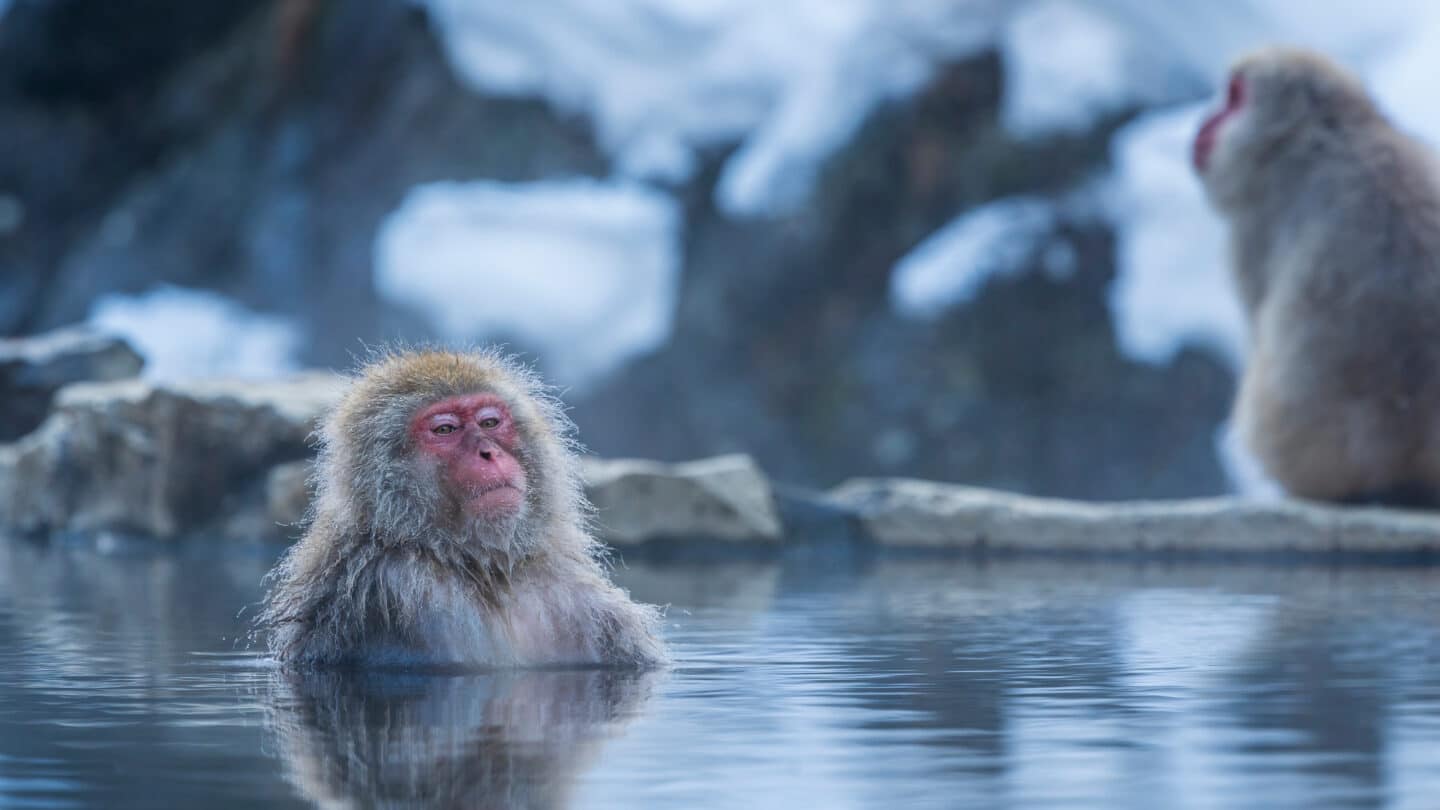
Winter Itinerary: Mountains and Monkeys
This itinerary takes travelers back into the mountains for a different reason—the Northern Japanese Alps are a beautiful snowy wonderland during the winter. Starting with a visit to the famous Snow Monkeys, you’ll also head to a bear wildlife sanctuary, which can really only be seen in the colder months, and then to the quaint and rural village of Chino.
Day 1: Yudanaka Onsen
The first destination in this adventurous itinerary is Nagano, host to the 1988 Winter Olympics, and the gateway to Japan’s magical Northern Alps. You’ll then travel even further, deep into the heart of the Alps, to the hot spring resort of Yudanaka Onsen, the perfect spot to visit in winter. Famous for its traditional Japanese ryokans (inns) and open-air hot springs, it is also known as the home of the Jigokudani Monkey Park, where wild Japanese macaques soak in the hot springs during the cooler months. The monkeys live in large social groups, and it can be quite entertaining to watch their interactions. Accustomed to people, they can be observed from very close and almost completely ignore their human guests. You will then head to your accommodation for tonight, a quaint Japanese ryokan. Ryokans are traditional Japanese inns with tatami flooring, futon bedding and your very own hot spring bath, the perfect spot to warm up after a chilly winter day.
Day 2: Obuse
This morning you’ll visit the charming town of Obuse, known as the home of renowned Japanese artist Hokusai, widely regarded as one of the most influential and talented artists in Japanese history, particularly in the field of ukiyo-e or woodblock printing. Hokusai is most famous for his series of landscape prints titled “Thirty-Six Views of Mount Fuji,” which features iconic prints such as “The Great Wave off Kanagawa.” He also created many other notable works, including portraits, illustrations of classical literature, and instructional manuals on art. The Hokusai Museum displays a compilation of Hokusai’s artwork, including two festival floats adorned with ceilings decorated by Hokusai himself, showcasing a dragon, a phoenix, and his signature waves. You’ll then explore the historic town center, which consists of art museums, a sake brewery, quaint shops and restaurants that line the narrow lanes and attractive, traditional style buildings at its center.
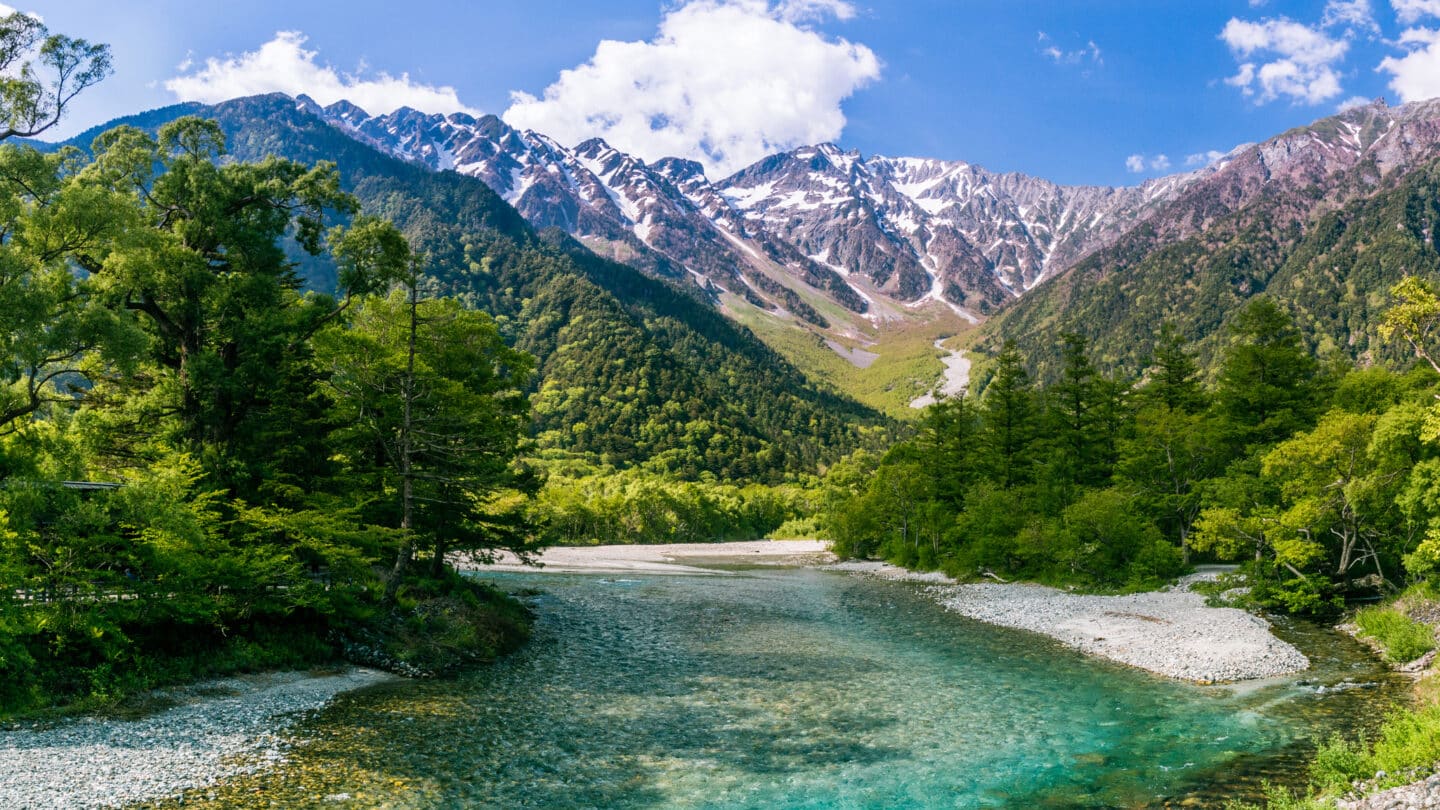
Day 3: Karuizawa
Karuizawa has a rich history dating back to the Edo period (1603-1868), when it was an important post town along the Nakasendo highway that linked Tokyo with Kyoto. During this time, Karuizawa served as a resting place for travelers and became known for its natural beauty and cool climate. In the late 19th century, Karuizawa began to attract attention as a summer retreat for foreigners and wealthy Japanese, who were seeking relief from the hot and humid summers in the cities, and it soon became a popular resort destination for Tokyo’s elite. Many notable figures, including diplomats, politicians, and writers, visited Karuizawa during this time, and it gained a reputation as a place of relaxation and luxury. Here you will be visiting the Picchio Wildlife Research Centre, home to Asian black bears, where a bear expert will educate you on the bear protection management utilized by the centre, followed by a field study tour to various habitat points. Some bears in the area have radio collars attached, so the Picchio experts will point out the current location of any nearby bears, and it’s possible that you may even encounter one of these majestic animals during the tour.
Days 4 and 5: Chino
You’ll continue your picturesque journey through the Northern Alps to the small town of Chino, home to only 55,000 people. Chino is not usually found on a tour itinerary for Japan, but with its stunning shrines, spectacular mountains, and friendly locals, it is a very special place to visit. You will take a tour of charming Sasahara Village with one of the local residents, who will tell you about the exceptional characteristics of the local houses, and you’ll have the rare chance to access certain storehouses and residences to see first hand how the locals live.
Lunch today is a special treat, as Asia Concierge has arranged a cooking lesson with a couple of the village matriarchs, Yoshiko-san and Sumiko-san. Your lesson, or “cooking with the grannies” as they like to call it, starts with an exploration of their garden where you will select vegetables for your lunch. They will then show you their cooking techniques, all the while giving you the run-down on life in the village. Lunch will include some of the local foods: Shime Tofu and Abura-age Rolls. Tonight’s accommodation is an experience in itself, as you will spend the night in a century-old farmhouse nestled in the foothills of the Yatsugatake Mountains, where you can bask in the refinement of classic aesthetics coupled with contemporary conveniences. Revel in the enduring charm of the authentic architecture, featuring sturdy wooden beams, ornamental alcoves, and even a quaint sunken hearth. Spoil yourself with abundant amenities, including modern bathrooms, heating, and plush sofas and beds that guarantee a snug and delightful stay.
The next day, you’ll take a bike ride to discover the origin of Japanese spirituality, Suwa Grand Shrine, a sanctuary so old that its origin is shrouded in mystery. You will visit the two upper shrines of Maemiya and Honmiya, where the Nature worship of ancient Japan is still strong, and pass by Jinchokan Moriya Historical Museum and the three teahouses of Takasugi-an, Hikusugi-an, and the Flying mud boat, where you will encounter the imaginative and quirky architecture of Fujimori Terunobu. On the way there, you will ride along the Miyagawa River, pass under a row of cherry trees that turn a pretty pink in spring and a fiery red in autumn, and discover a lot of hidden spots only the locals know. You will also stop by a shop selling kanten, typical food from the area, and have a break for lunch at a local café. Chino has a true rural charm not normally discovered in the more visited areas of Japan, and this itinerary is a perfect way to see the city through the eyes of a local.
Contact:
Asia Concierge
Japan Contact: Jarrod Stenhouse
Email: jarrod@asia-concierge.com
Website: https://asia-concierge.com/
